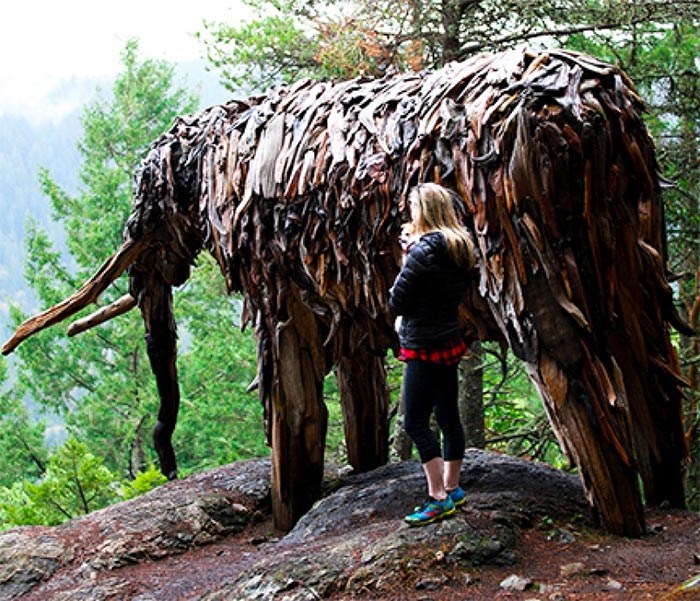 Photo DANIEL O’SULLIVAN
Photo DANIEL O’SULLIVAN
A steep incline in front of me, rain running down my eyes, I stop and lean against an Arbutus tree.
After an hour or so of hunting for a giant, driftwood mastodon on Saturday, I’m out of breath and muddy — and undeterred.
It’s so close, I can feel it.
Also, my husband and I made a pact to keep going until we find it.
“Wait here,” says Daniel, spider senses tingling suddenly. “I have a feeling.”
“Whatever,” I say, still puffing and huffing. I take off my raincoat and tie it around my waist.
He scrambles up ahead, like a mountain goat.
My dog, Lola, yawns. She’s being carried, no longer willing or able to walk up the trail.
A raven caws.
My stomach growls.
There’s nothing else around us but the sound of the rain in the trees and a river somewhere in the distance.
I wait.
And five minutes later I spot Daniel ambling down a rock face, eyes big.
He’s grinning.
“Come on,” he says. “I’ll carry Lola.”
“Did you find it?”
“Come on,” he repeats. “You’ll see.”
A few minutes later, I am speechless.
There’s honestly nothing to say when you come across Bowen Island sculptor, Guthrie Gloag’s driftwood mastodon hidden away, in a secret location, somewhere in B.C. (That’s all I can say.)
The giant, driftwood artwork is about eight and a half feet tall, about 2,000 pounds, and it is probably the most powerful installation I’ve ever seen.
Or felt.
It startles you. It leaves you speechless and taken aback by its scale and its setting.
The sculpture is titled, Mourn: An American Mastodon.
“It’s of an animal that has been extinct for approximately 10 to 12,000 years, likely because of human pressures. These massive creatures were once widespread across North America,” says Gloag, on his website, guthriegloag.com
“The American mastodon, which is what I’ve created, is the first species that scientists recognized as having gone extinct. In this way, they are fundamental to our understanding of extinction.”
To build it, he says, he hiked driftwood into the forest one backpack at a time.
And he says, the secret is part of the artwork.
“I’ve kept its location secret for several reasons. Partly, I like the magic of people knowing it exists but not knowing where. I love the idea of someone stumbling upon it in the woods,” he says.
“But I’m also scared that history will repeat itself, and the mastodon will be damaged.”
It’s also about conservation, he says.
“I hope that if someone does stumble upon my mastodon, or sees images of it, they might reflect on the animals living today that could be lost due to human impacts,” he says. “Just as the mastodon became a symbol of extinction, I hope that my sculpture can be a message of conservation."
There’s a guestbook in a waterproof container on a bench near the sculpture, an invitation for visitors to document their thoughts and experiences.
“What a great surprise and well worth the climb,” writes one person.
“First attempt was a four and a half hour walk in the wrong direction, but fantastic scenery and views,” writes another.
Me?
I wrote: “Thank you for creating this moment, this memory. This amazing experience. We are in awe.”
And truthfully, I wasn’t exaggerating.
We spent about an hour examining the mastodon, marvelling at it from different angles. Just us and an eagle who kept flying by.
And on the way back, we walked quietly at first, lost in our own thoughts. In the power of finding something so incredible and unexpected, and the joy of knowing it’s out there.


